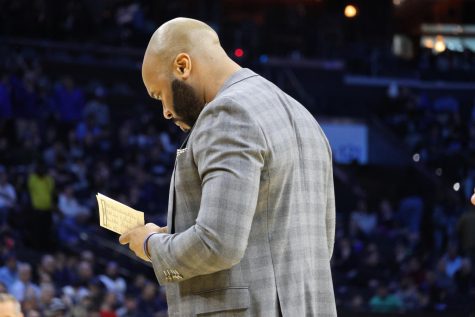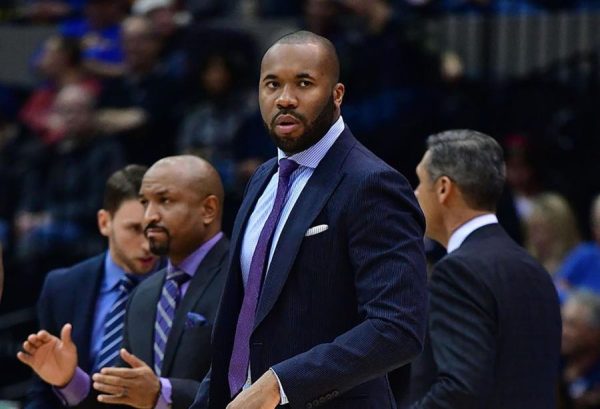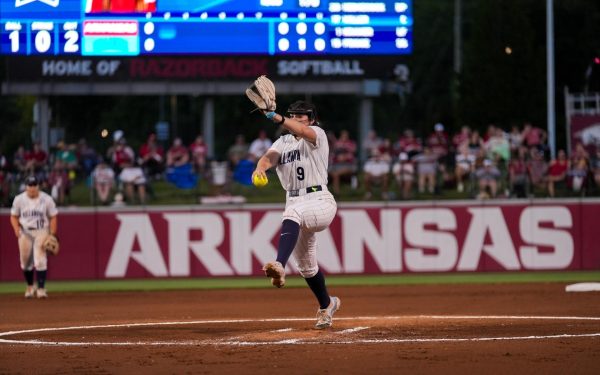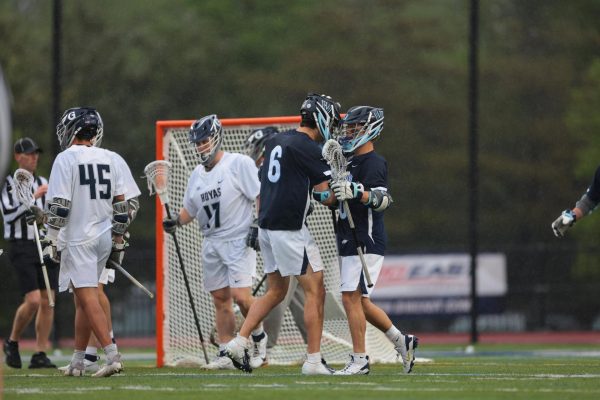Why kids shouldn’t be allowed to play football
April 12, 2016
Parents have always done everything possible to help their children blossom into intellectual, talented beings. Whether it’s through academia, drama productions, piano lessons or athletics, parents invest their ideas, time and money into their childrens’ futures.
Growing up, sports can be instrumental for a kid’s development. Athletics provide young children the ability to be healthy and develop social skills at an early age.
Although there are physical, mental and social benefits available with sports, there comes a negative aspect, specifically with high contact sports such as football, that should make playing the sport of football as a child illegal.
Kids should not be allowed to play football due to the high risk of irreparable brain damage and the possible symptoms associated.
Recent studies overwhelmingly prove an extreme risk for children playing football. Also, the National Football League hasn’t done much in the past to help those affected.
Over the past several decades, it has become clear that continual blows to the head during high-contact sports, such as football, ice hockey and boxing, create a risk for heightened permanent brain impairment.
According to the Boston University CTE Center, athletes who have sustained multiple concussions, are developing chronic traumatic encephalopathy (CTE). Changes in the brain can begin months, years or even decades after the culmination of an athlete’s career.
Advanced radiological and neurocognitive studies after a child’s football season display apparent brain damage at the cellular level of brain functioning, even if there were no reported symptoms or documented concussions suffered by the child at the time.
Possible symptoms associated with CTE include memory loss, depression, confusion, suicidal thoughts and actions, aggression, impaired judgment, loss of intelligence and dementia later in life. CTE has also been linked to the abuse of drugs and alcohol once a child enters his or her 20s, 30s or 40s.
Mick Foley, three-time WWE Champion and New York Times bestselling author, wishes he had known the consequences and severity of concussions when he was a child.
“I think a lot of the improvement starts way down at young ages at the coaching level by convincing kids in themselves, that it’s not the tough or cool thing to continue playing when you’re hurt,” Foley said at a discussion at Villanova University Charles Widger School of Law on Feb. 24, 2015.
Children are minors. They are young and unaware of the effects of playing football. Many do not realize that just because a child isn’t knocked out or throwing up doesn’t mean that he or she isn’t concussed or has experienced some degree of severe head trauma.
Society and parents have a duty to put an end to allowing children to play high-contact sports.
Rather, allow kids to play two-hand-touch or flag football to develop skills and learn the game in a safer manner. Once children are 18, that’s when they should be able to make their own athletic decisions.
A broken leg can mend. An elbow to the thigh will bruise, but it will heal.
The brain, on the other hand, doesn’t work like that.
Unlike other parts of the human body, specifically the organs, the brain does not have the ability to cure itself fully after suffering injuries.
The risk of permanent impairment is heightened, because neurons in the brain do not regenerate themselves when damaged.
A month ago, the NFL’s top health and safety officer acknowledged the link between football and CTE. It was the first time a senior league official has admitted this connection.
However, for decades now, it’s quite alarming how the NFL has continually denied that there is a tie between football-related head trauma and CTE. It has shown a lack of care and responsibility that puts the adult players and developing youth in danger.
For example, Mike Webster was the first NFL player diagnosed with CTE. After Webster passed away in 2002 of a heart attack, it was discovered that he had been suffering the effects of the disease.
However, Webster’s case was not published until 2005, three years later.
Chris Nowinski, co-founder and executive director of the Sports Legacy Institute, decided to study Webster’s brain. He discovered that Webster did have CTE. The NFL’s reactions were careless and irresponsible regarding Nowinski’s findings.
In an interview following Nowinski’s study, an NFL representative was questioned whether multiple head injuries among professional football players were linked with depression, early-onset Alzheimer’s, dementia, or any long term disease, and the representative continually answered a firm, “No.”
Although the NFL pronounced its acknowledgement of the tie between CTE and football recently, it is unclear what type of support the organization will offer for this issue moving forward considering their actions in the past.
Although it is not up to the NFL to decide whether children should play football, it is important that the nation’s largest football league understands and admits the potential dangers of playing football.
Children should not be exposed to an organization that will not protect them.
It is up to both society and parents to step in and prevent themselves from making one of the biggest mistakes of their childrens’ lives.












